-
CATEGORY ::
- All Seeds /
- All Herb Seeds
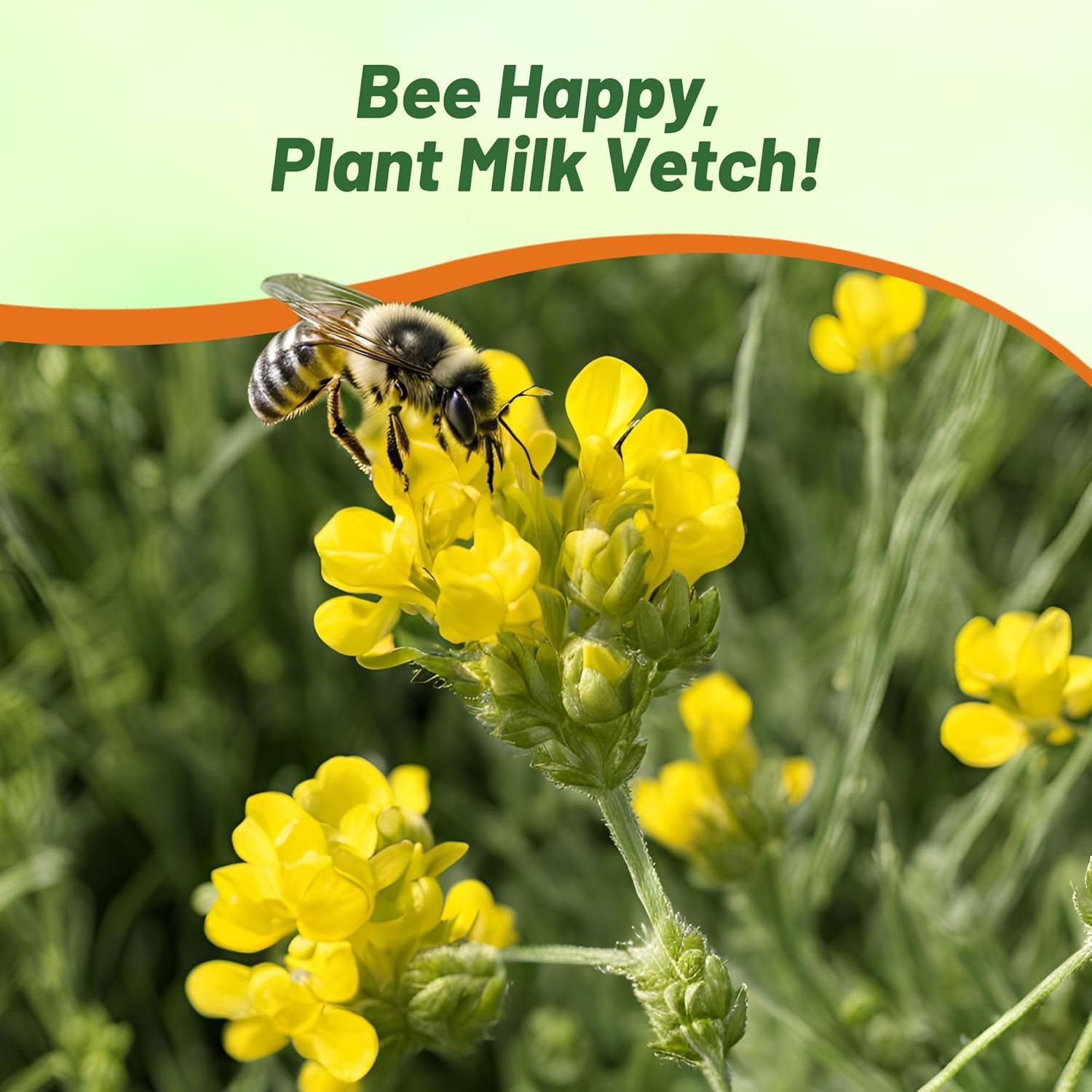

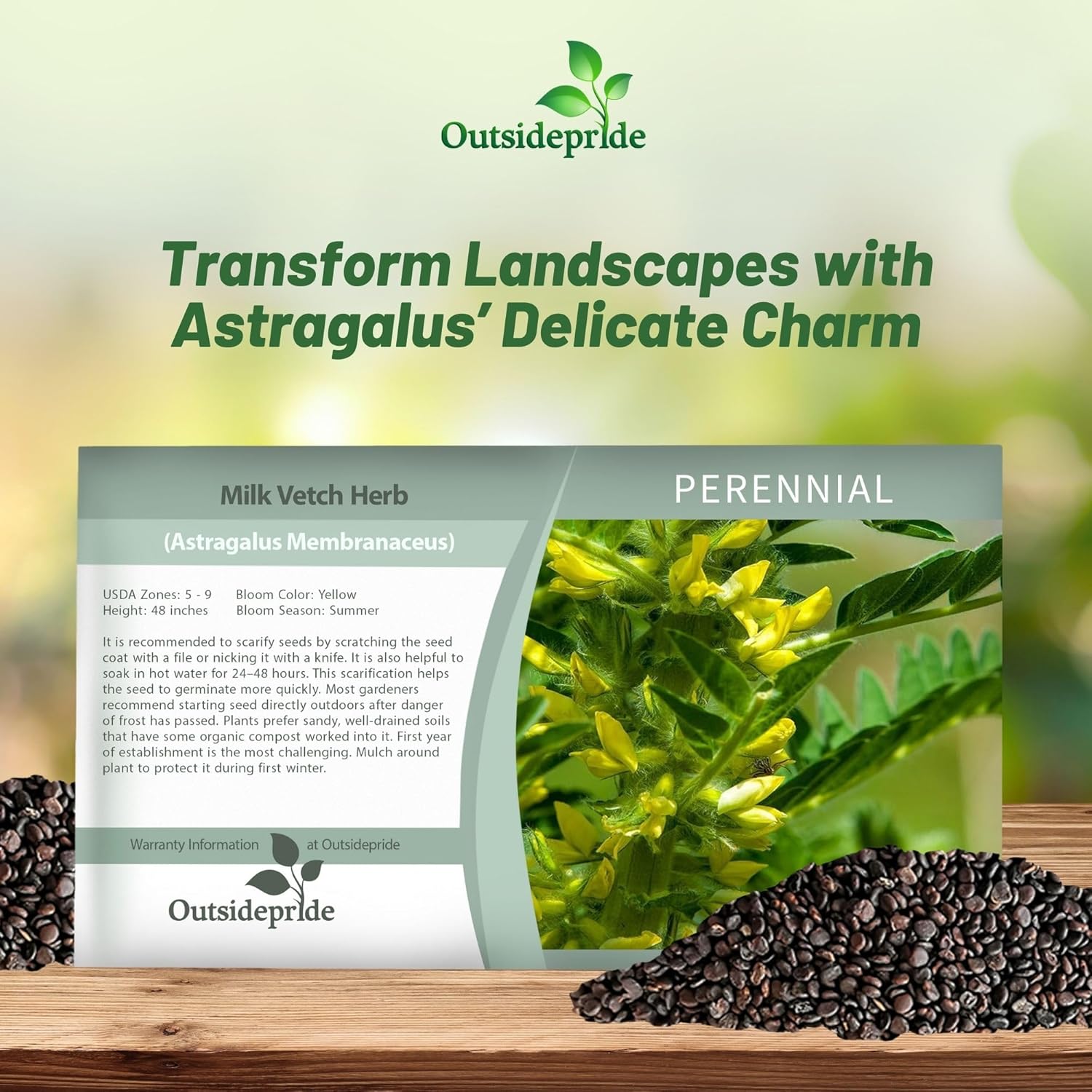

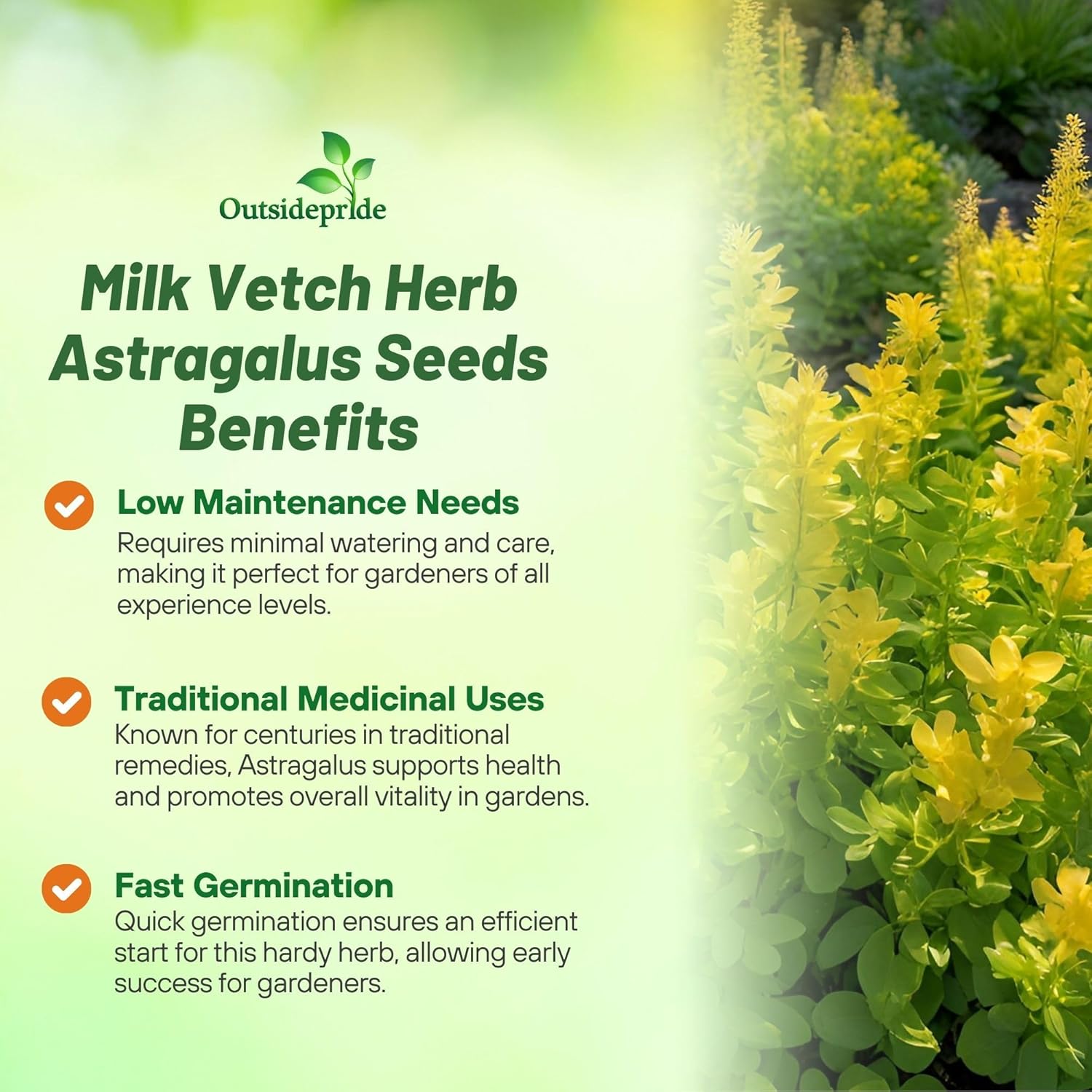
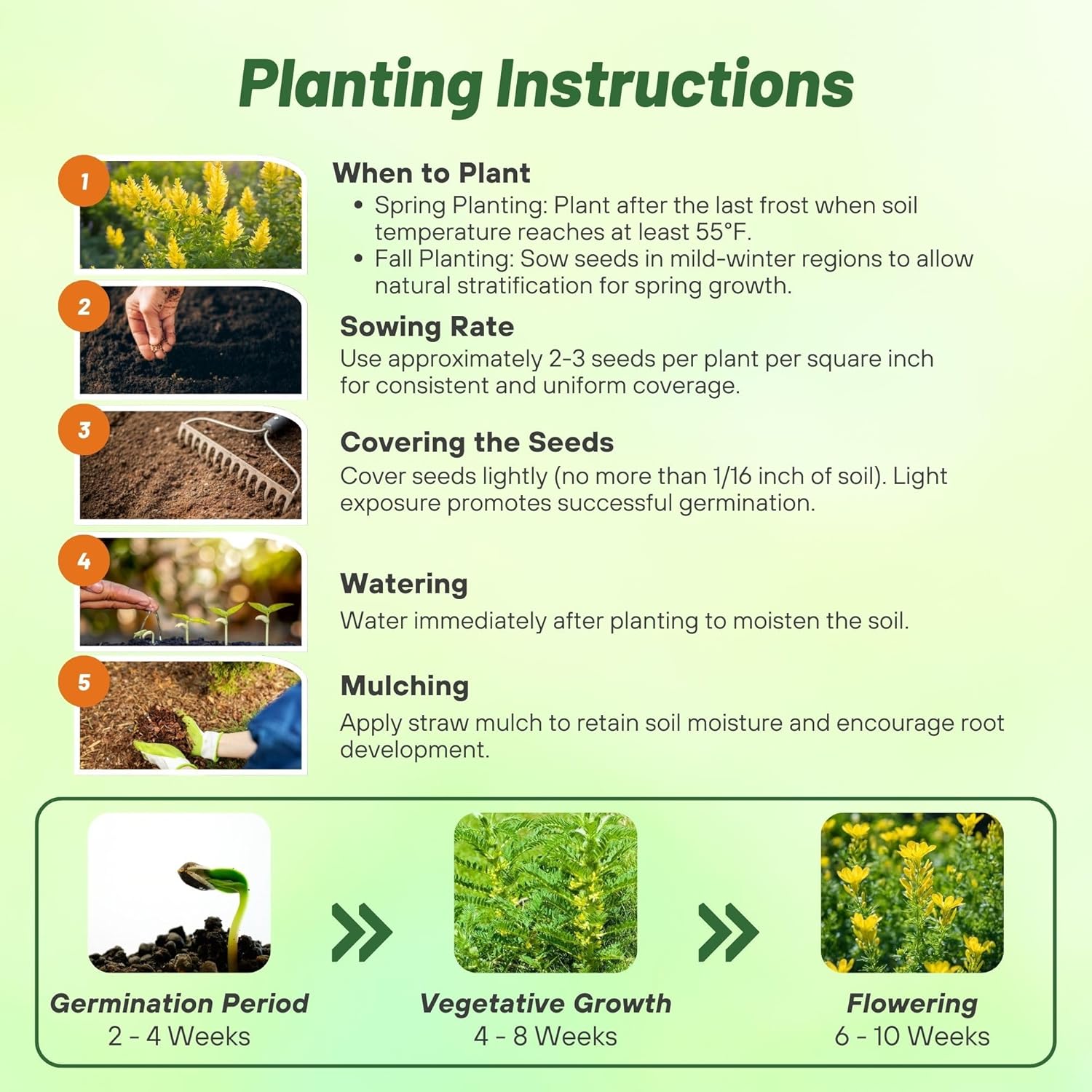



Astragalus Seeds
SEASON
Perennial
USDA ZONES
5 - 9
HEIGHT
48 inches
BLOOM SEASON
Early to late summer
BLOOM COLOR
Yellow
ENVIRONMENT
Full sun to partial shade
SOIL TYPE
Sandy, well-drained, slightly alkaline soil, above 7.0
DEER RESISTANT
Yes
SEASON
Perennial
USDA ZONES
5 - 8
HEIGHT
24 - 36 inches
BLOOM SEASON
Late spring through summer
BLOOM COLOR
Mix
ENVIRONMENT
Full sun
SOIL TYPE
Well-drained, pH 5.8 - 6.8
DEER RESISTANT
Yes
SEASON
Perennial
USDA ZONES
5 - 8
HEIGHT
16 inches
BLOOM SEASON
June - August
BLOOM COLOR
White
ENVIRONMENT
Partial shade to full shade
SOIL TYPE
Well drained soil, pH 5.6 - 5.8
DEER RESISTANT
No
LATIN NAME
Panax ginseng
SEASON
Biennial
USDA ZONES
2 - 10
HEIGHT
60 inches
BLOOM SEASON
Late spring to mid summer
BLOOM COLOR
Purple
ENVIRONMENT
Full sun to partial shade
SOIL TYPE
Well drained, moist soils
DEER RESISTANT
Yes
SEASON
Perennial
USDA ZONES
3 - 7
HEIGHT
16 - 24 inches
BLOOM SEASON
Mid summer to early fall
BLOOM COLOR
Green
ENVIRONMENT
Full sun to partial shade
SOIL TYPE
Rich, well-drained soil, pH 5.6 - 6.5
DEER RESISTANT
Yes
SEASON
Perennial
USDA ZONES
7 - 11
HEIGHT
14 inches
BLOOM SEASON
Mid spring to late summer
BLOOM COLOR
Purple
ENVIRONMENT
Full sun
SOIL TYPE
Light, sandy soil, pH 5.6 - 7.5
DEER RESISTANT
Yes
HOUSE PLANT
Yes
SEASON
Biennial
USDA ZONES
5 - 10
HEIGHT
40 - 55 inches
BLOOM SEASON
Late spring to mid summer
BLOOM COLOR
Pink
ENVIRONMENT
Full sun
SOIL TYPE
Grows in any type of soil, pH 6.6 - 7.8
DEER RESISTANT
Yes
SEASON
Annual
USDA ZONES
5 - 9
HEIGHT
20 - 24 inches
BLOOM SEASON
Mid summer to early fall
BLOOM COLOR
Yellow
ENVIRONMENT
Full sun
SOIL TYPE
Well drained, dry, rocky, poor soils
DEER RESISTANT
Yes
About...
Astragalus (Astragalus Membranaceus) - Start Astragalus seeds and grow this herbaceous perennial plant that is native to the northern and eastern parts of China as well as Mongolia and Korea. It is is the pea family and produces small, pea-like yellow flowers.MORE HERB OPTIONS
Planting Directions
TEMPERATURE
70F
AVERAGE GERM TIME
7 - 30 days
LIGHT REQUIRED
No
DEPTH
1/4 - 1/2 inch deep
SOWING RATE
2 - 3 seeds per plant - Scarify seeds before you plant them by scratch...more 2 - 3 seeds per plant - Scarify seeds before you plant them by scratching each seed with a nail file or nicking it with a knife--this will speed germination...less
MOISTURE
Keep seeds moist until germination
PLANT SPACING
12 inches

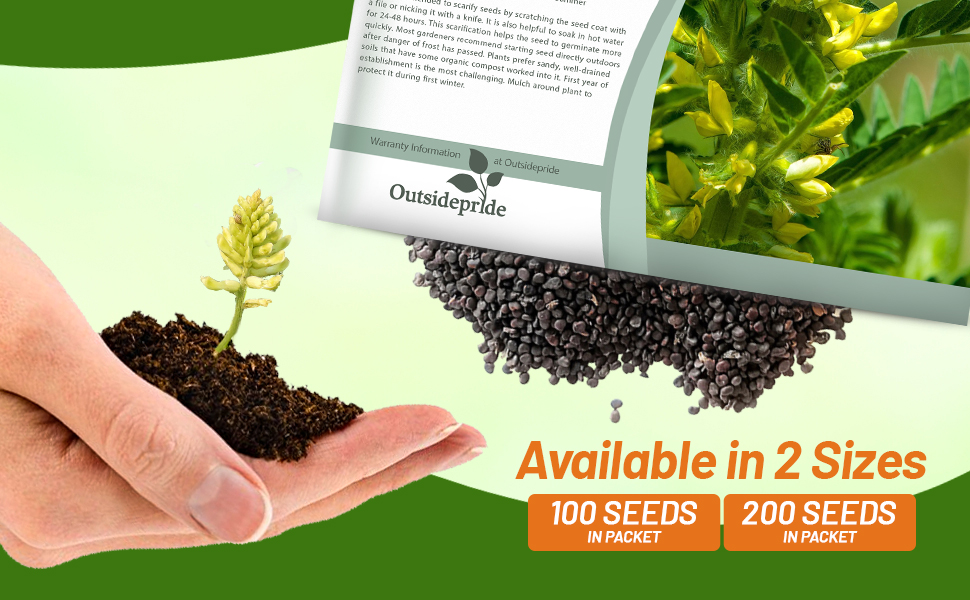
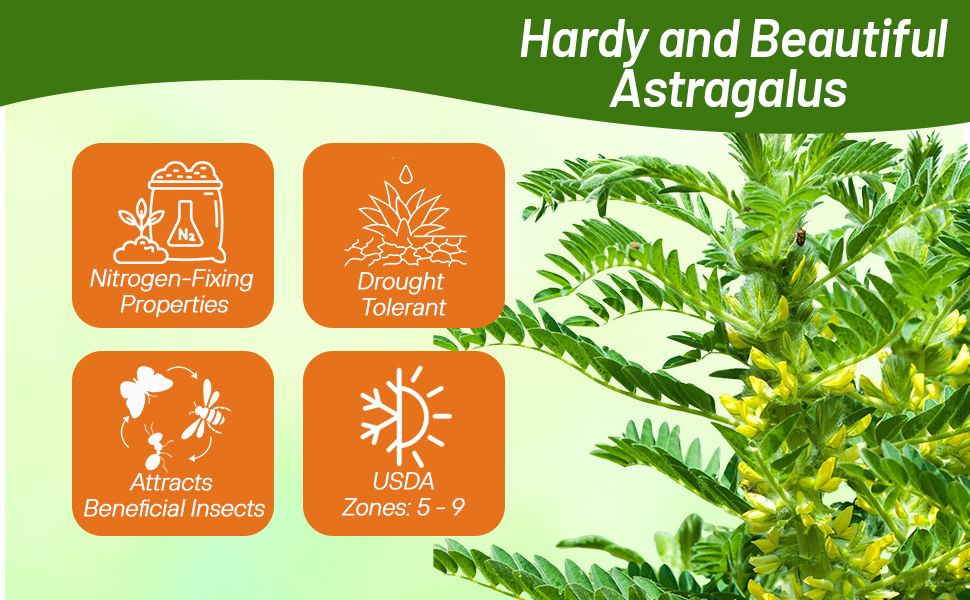

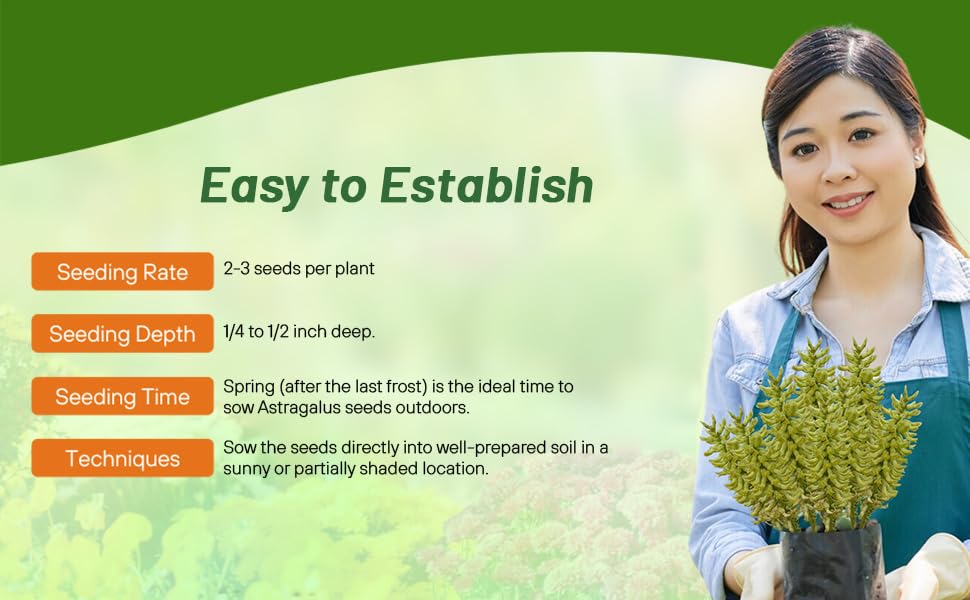
Astragalus (Astragalus Membranaceus) - Start Astragalus seeds and grow this herbaceous perennial plant that is native to the northern and eastern parts of China as well as Mongolia and Korea. It is is the pea family and produces small, pea-like yellow flowers. Astragalus has a long history, many centuries in fact, as a medicinal herb in Chinese medicine. Research in modern day is also finding helpful benefits from the Astragalus herb plant. The Astragalus herb is also known as Milk Vetch or Chinese Milk Vetch.
The Milk Vetch herb is called an adaptogen and it boosts the body's immune system and protects the body against various stresses, including physical, mental, or emotional stress. It contains antioxidants and is believed to help prevent colds and upper respiratory infections. It also has antibacterial and anti-inflammatory properties and can be used on skin abrasions and wounds.
How To Grow Chinese Milk Vetch: It is recommended to scarify the Astragalus herb seeds by scratching the seed coat with a file or nicking it with a knife. It is also helpful to soak the Astragalus herb seeds in hot water for 24 - 48 hours. This scarification helps the seed to germinate more quickly. Most herb gardeners recommend starting the Milk Vetch seed directly outdoors after danger of frost has passed. Astragalus herb plants prefer sandy, well-drained soils that have some organic compost worked into it. The first year of establishment is the most challenging. Mulch around the herb plant to protect it during its first winter.
The Astragalus root is the part of the plant that is used medicinally. When the herb plant is 4 - 5 years old, it is ready to harvest the root in the fall. Astragalus root can be used fresh or dried.
Common Questions
Which herbs can thrive in the kitchen?
Not all herbs are suitable for indoor growth. Herbs with woody, bushy growth, like rosemary are too large for indoor herb gardens. Consider other more suitable herbs for an indoor kitchen garden, such as chives, oregano, thyme, dill, mint, basil, cilantro, sage and savory. Each herb has specific growing needs, so ensure to provide the right amount of light, humidity, and air circulation. If using a single large container, ensure that all plants require similar amounts of sunlight and water. For instance, chives and cilantro may not need as much sunlight as dill and oregano.
What are good companion plants for herb gardens?
Pairing herbs based on watering requirements, like planting lavender with thyme or basil with chives, is ideal for maintaining the health of both plants. Avoid companion planting with catnip, lemon balm and mint as they should be grown in separate pots due to their rapid spreading nature that can overtake other plants in your indoor herb garden.
When do I establish an indoor herb garden?
Create a kitchen herb garden by propagating cuttings from your outdoor plants as the weather cools in the fall. If you opt to sow your indoor herb garden from purchased seeds, begin a few weeks before the anticipated first frost of the season. Most herbs can be harvested within a few weeks, so there is no need to plant too far in advance.
Do kitchen herbs need full sun?
Most herbs need 6 hours of sunlight a day to thrive. If you do not have this type of light available in your kitchen, consider a grow light that will run 14-16 hours per day 6 to 12 inches above your plants. NOTE: Rotate herbs periodically when grown in windows to let each part of the plant receive sunlight.
What time of year should you plant herbs?
Herbs grown in indoor gardens can be planted any time of year. Many gardeners prefer to grow their herbs outdoors during the summer growing season, and then move them to their indoor garden before the first frost of fall. If you prefer to start your seeds outdoors, you will need to wait until after danger of frost in the spring or start your seeds indoors 6 -8 weeks before last frost and transplant in your garden after danger of frost.
Do herbs come back every year?
Perennial herbs will come back each year when planted in the correct zone or grown indoors during the cold winter months. Popular perennial herbs are oregano, parsley, sage, fennel, chives, lavender, thyme and mint varieties.
How do I know when my herbs need watered?
Allow the soil to dry out just slightly before watering your herbs again. Give your indoor herb garden a dose of diluted water-soluble fertilizer every 2 weeks or so. Too much food will compromise the taste of the herbs. It is also beneficial to provide adequate humidity. If the indoor air is especially dry – which is often the case in regions with cold winters. Set the herbs pots on trays of stones. Fill the trays with water but keep the level below the drainage holes of your pots.
When do I water my outdoor herb garden?
Different herb plants will need different amounts of water so keep this in mind when planting your garden and keep similar plants together to simplify watering. Watering is best done in the early morning hours when temperatures are cooler. Many herbs are hardy. They can tolerate soil that is moderately dry. You want to keep an eye out for wilting when the soil is wet. Ideally, your herbs should make quick use of the water you give them. Saturated soil is not what you are after. Pay close attention to the coloration of the leaves on your herbs. Yellow leaves can be a sign of too much water, and so can black leaves. If you spot any mildew or fuzz on the herbs, too much moisture can be the problem.
How do I harvest my herbs?
Trim back flowering sections before they bloom for healthier leaves. Prune new growth on young plants weekly to encourage a fuller mature plant. Snip herbs for harvest when they are just a few inches tall. Pruning back the herbs often means a larger, longer harvest. Cut the new growth back at least one per week, even if you are not using the herbs in recipes (see drying and freezing page if you do not want to waste your harvest). Long stems that are about to set flower buds should be trimmed off as they appear.
What do I need to start an indoor herb garden?
Common tools needed for an indoor herb garden are: garden trowel, scissors for snipping, stones (optional). Materials for your herbs plants include seed, pots, potting soil, cactus potting soil (optional), pots or trays, fertilizer and a grow light if you do not have adequate sunlight of at least 6 hours per day for your plants.
How do I prepare my containers for planting?
Choose large, deep containers with drainage holes to accommodate fast-growing herbs. Fill the container with potting mix leaving about ½ inch clear at the top. Use standard commercial potting soil for most herbs but blend in cactus potting mix for herbs native to the Mediterranean, such as thyme and oregano which prefer dryer soils.
Can I put my indoor herb containers outside?
Yes! Move your potted herbs to the patio or deck when the weather warms in the spring and for a boost of sunshine.
How do I know when my herbs need larger containers?
When roots begin to emerge through the drainage holes of its container, it is time to repot the herbs. Replace the potting mix; the organic material in the potting mix breaks down over time. Remove any plants with woody or thickened stems and replace them with new seeds or seedlings.
Do herbs need fertilizer?
The short answer is yes. However, not all herbs have the same fertilizer needs. Herbs roughly fall into two groups. 1. Slow-growing herbs with small leaves or needles and fibrous, woody stems that are native to the mediterranean where they grow culinary lavender, month, marjoram, oregano, rosemary, sage, savory, tarragon and thyme. 2. Fast-growing herbs with larger, thinner leaves. These can be annuals such as basil, borage, cilantro, chervil and dill; bi-annual herbs such as parsley or perennials such as chives. Herbs in the first group generally need less fertilizer than herbs in the second group.
What type of nutrients do herbs need?
Start out by planting herbs in healthy soil rich in organic matter. In addition, they will benefit from an organic complete, slow-release fertilizer containing equal amounts of macronutrients nitrogen, phosphorus and potassium. A slow-release fertilizer is especially important if your garden has sandy soil because nutrients wash out quickly. To give fast-growing herbs that you harvest often an extra boost, you can also apply fish emulsion, an organic fertilizer that is high in nitrogen, with an NPK ratio of 4-1-1 or 5-1-1.
How often should I fertilize my herbs?
The frequency of fertilization follows the growth pattern of the herbs. In soil of average fertility, it is usually sufficient to apply a balanced fertilizer in the spring when they break dormancy, or when the new growing season starts. For other herbs, a light monthly application of a slow-release complete fertilizer should be enough – unless the leaves start to look yellow, which may be a sign of nitrogen deficiency. In that case, applying fish emulsion is a quick fix but before you reach for the fertilizer bottle, rule out that the yellowing of leaves is not caused by something else.
How do I fertilize my herbs in a container?
Herbs grown in containers need fertilizer applications more often, because with frequent watering that container plants require, the fertilizer in the potting mix washes out more quickly. Just as with sandy soil, it is important to use slow-release fertilizer. The roots of container plants are in a confined space, unlike herbs grown in the garden or raised beds, which can lead to over fertilization if you are not careful. Organic fertilizers are recommended over synthetic which often contain a high level of salts that can build up in the container over time. To prevent this, it is best to use half the strength of the fertilizer amount specified on the label for any type of fertilizer.
Is it possible to overfertilize herbs?
Adding too much fertilizer to herbs usually leads to an excess of nitrogen, which has undesirable results especially for slow-growing herbs. For basil and other thin-leaved herbs, the fast leaf growth induced by nitrogen is fine because you want your plants to be lush. For rosemary and other Mediterranean herbs however, rapid growth means that there is less concentration of essential oils causing the herbs to become less aromatic and have weaker flavor.
How do I prepare garden soil before planting an herb garden?
Once you have picked the location for growing your herb garden, you will need to prepare the soil. If the soil is sandy or clay heavy, add plenty of compost. Even if your soil is in pretty good condition, working some compost into the soil will help provide nutrients to the herbs while they are growing.
Can I harvest my herbs too often?
Many times, when a new gardener is starting an herb garden, they are afraid that harvesting the herbs frequently will hurt them. The opposite is true. Frequent harvesting of herbs will result in the herb plant producing more and more foliage, which increases the amount you are able to harvest. At the end of the season, you can dry or freeze your herb harvest to enjoy home grown herbs all year long.
I don’t have a good sunny spot outdoors for my herb garden, what can I do?
If your yard is mostly shaded, there is not much you can do to change that, but you can pick shade friendly herbs. Parsley, sweet woodruff and mint are good examples of herbs that don’t require as much light. If you are growing plants in low light, manage your expectations. Your herbs will grow but will be slow and results less impressive.
My container soil is staying wet, what do I do?
Choose a container that allow for water to drain. If you over water or if it rains too much a good pot will allow the water to flow to the bottom without soaking and rotting the roots of your plants. You can use rocks or pottery shards to fill the bottom of the container to help with drainage. This applies outdoors too. If your herbs constantly have wet feet, they won’t thrive. Either plan when planting your garden and add some sand for drainage or pick plants that don’t mind wet roots as much.
My herbs plants are going to seed, why?
The short answer is you are not pruning enough. To prevent rapid growth and encourage a bushy habit, be sure to prune your herb plants regularly. The more you pick off your stems and leaves the longer your herb plant will remain in its production cycle. If you start to see flower heads, snip them right away. When you fail to cut back the plant, it is likely to go to seed and complete its lifecycle. Once that happens, many plants die back. Keep cutting and pinching back flowers to prevent this from happening.
Should I throw away my seeds on their expiration date?
Seeds do not have an expiration date, rather they are a sell by date just like food. The dates on seed packages are guidelines to help you know when your seeds are getting old, but it does not mean you need to toss them. Every plant is different. Some seeds last longer than others. Most seeds, if kept cool and dry, will last 2 – 3 years. If you are unsure test them out by growing microgreens.
Planting Directions
TEMPERATURE
68F
AVERAGE GERM TIME
14 - 21 days
LIGHT REQUIRED
Yes
DEPTH
Do not cover the seed but press into the soil
SOWING RATE
8 seeds per plant
MOISTURE
Keep seeds moist until germination
PLANT SPACING
18 - 24 inches
Verbascum (Verbascum Phoenicium Hybrids Mix) - This free flowering mix grown from Verbascum seeds will give your garden weeks of lovely colors. Commonly called Purple Mullein, this plant has dark green, crinkly leaves and beautiful spikes of papery-thin, round 5 - petaled blooms in shades of white, rose, and violet. The Purple Mullein plant starts blooming from the bottom of the spike and proceeds upward, opening one by one. Mullein flowers look lovely in a mixed border, and they can bloom from late spring up until the first frost. It is both deer and rabbit resistant, and butterflies love it! Verbascum flowers are excellent for cutting as well. Also considered to be a medicinal herb, the Mullein herb has diuretic, analgesic, expectorant, and antiseptic properties.
How To Grow Mullein From Seed: Plant Mullein seeds indoors 6 - 8 weeks before last frost date. Lightly press the Verbascum flower seeds into the soil, but do not cover with soil since the seeds need light to germinate. Keep constantly moist, not wet, and the herb seeds will germinate in 14 - 21 days. For outdoor sowing, wait until frost danger has passed, and sow Purple Mullein seeds directly into prepared seed bed. Spacing should be about 18 - 24 inches apart. Verbascum Mullein will bloom the first year if the flower seeds are sown early enough in the season. Flowers can be left on to self-seed or can be deadheaded to encourage more blooming.































